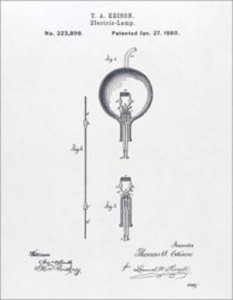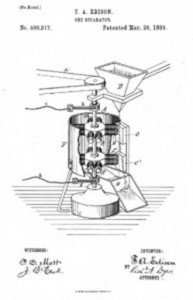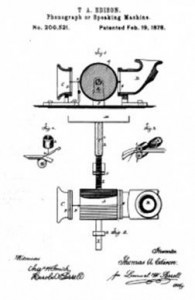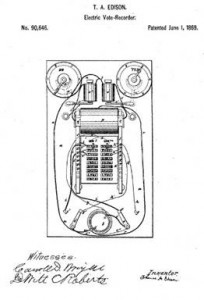Patents are the lifeblood of competitive industry, the intellectual knowledge and know-how of a company – the blueprints for its key products and processes. All inventors protect their intellectual property, realizing the great value it has in keeping them a vibrant force in the world marketplace. Thomas Edison knew too. His 1093 patents are testimony to his discipline of protecting his intellectual property, which helped ignite a firestorm of patent applications worldwide that shows no sign of slowing down.
Close to 70% of the growth of our economy is directly attributable to science, technology, and invention. This is the feedstock for entrepreneurs and risk-takers who will follow in Edison’s footsteps to bring the marketplace the products and services desired. Patents are the powerhouses of economic growth-the highly charged fuel that energizes our globally competitive environment.
Patents derive from old English law, dating back to when kings and queens issued royal charters for a manufacturer to supply certain products for a specified period of time. Our founding fathers gave the power to the first Congress to establish a patent office, knowing full well the economic power of patents and the strong incentive it would supply to America’s inventors and innovators. It may be the oldest U.S. government office, generating a positive cash flow from the fees it charges inventors to establish and maintain their patents. Some of our most cherished founding fathers were inventors, Franklin and Jefferson as classic examples … they had to be to tame a new country, solving problems at every turn. Washington was an entrepreneur, in the marketing and development of land, and the distilling of spirits.
Over 8,000,000 patents have been awarded since 1792 [the formal date of the establishment of the U.S. Patent and Trademark Office-USPTO. You can take a quick and easy look at America’s patents by going to www.uspto.gov, http://www.google.com/patents, or http://www.freepatentsonline.com/. These sites are a great way for students and teachers to see how just about anything they can think of in their daily lives is affected somehow by a patent currently in force, or from one in the past. Traditionally, about 65-70% of the U.S. patent applications filed, result in granted or issued patents. [Did you know that Thomas Jefferson was the first head of the US PTO?]
Here is another fascinating fact. When Edison was born in 1847, the USPTO had by that time issued a total of about 5,000 patents. By 1935, the 2,000,000th patent was issued; by 1976 the 4,000,000th patent; and by 2011, the 8,000,000th. Edison died in 1931, but what an industrial revolution he had not only witnessed but played a major role in implementing. His work continues to inspire inventors and entrepreneurs worldwide today.
It would seem that Edison’s “invention factory” process has paid off quite nicely. Major world economies know the value of patents, and use them to maintain and advance their competitive positions, seeing intellectual property as a strategic resource. Of all of Edison’s great inventions, his invention factory [R&D labs] may be his greatest as it has affected, and keeps on affecting, so much of the world economy, propelling it relentlessly forward. Thanks Tom!
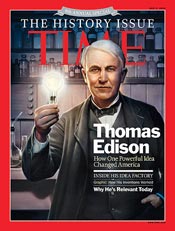 “To invent, you need a good imagination and a pile of junk.”
“To invent, you need a good imagination and a pile of junk.”
Time ® is a registered trademark of Time Inc.

